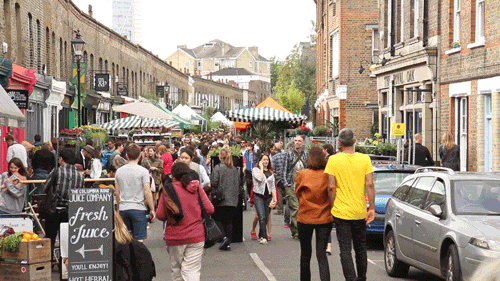Around one in 12 men and one in 200 women in the UK suffer from colour vision deficiency, or “colour blindness”, as it’s more colloquially known.
People who are colour blind find it difficult to distinguish between certain colours, such as reds, oranges, yellows, browns and greens.
According to the NHS, the condition is usually passed on to a child by their parents and is present from birth, although sometimes it can develop later in life.
To raise awareness and understanding of the condition, researchers at Clinic Compare teamed up with consultant ophthalmic surgeon Valerie Saw to create a series of gifs showing what living with colour blindness is really like.

”Colour blindness affects approximately 4.5% of the UK population,” Saw told The Huffington Post UK.
“The most common form of colour blindness is red/green colour blindness. Individuals with this condition cannot see the red or green elements of colours.
“The effects can be mild, so a proportion of people are not aware that they are colour blind.”
She added that relatively little research has been done into the effects of colour blindness on everyday life.
“Colour blind people learn to manage by distinguishing between hues and learning the relative positions of lights, but increased awareness of the needs of colour blind individuals in schools and workplaces would be a step forward,” she said.
Check our more gifs from the project below.
Monochromacy

”This is rare, the most severe form of colour blindness, where none of the cone cells work. People with this condition see the world in black, white and grey,” Saw explains.
“They tend to be very sensitive to light, and have nystagmus [rapid involuntary eye movements].”
Red Blind

”There are no working red cone cells in males with protanopia,” Saw explains.
“Red appears as black, and certain shades of orange, yellow and green all appear as yellow.
“This is an X-linked disorder which affects approximately 1% of males.”
Blue Cone Monochromacy

”This is a rare form of colour blindness where two of the three cone cells do not work,” Saw explains.
“People with cone monochromacy have trouble distinguishing colours because the brain needs to compare the signals from different types of cones in order to see colour.
“When only one type of cone works, this comparison isn’t possible. People with blue cone monochromacy, may also have reduced vision, near-sightedness, and uncontrollable eye movements.”
Green Weak

”In males with abnormal green cone cells (deuteranomaly), yellow and green appear redder and it is difficult to tell purple from blue,” Saw says.
“This condition is mild and doesn’t interfere with daily living. Deuteranomaly is the most common form of colour blindness and is an X-linked disorder affecting 5% of males.”
Red Weak

”In males with abnormal red cone cells, red, orange and yellow appear greener, and colors are not as bright,” Saw explains.
“This condition is mild and doesn’t usually interfere with daily living. Protanomaly is an X-linked disorder estimated to affect 1% of males.”